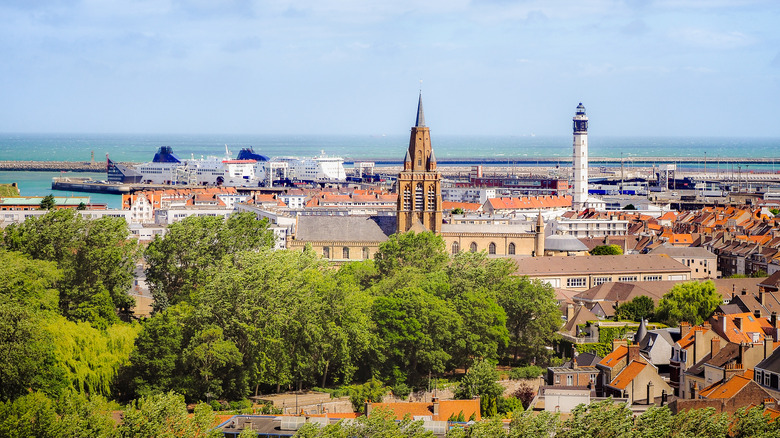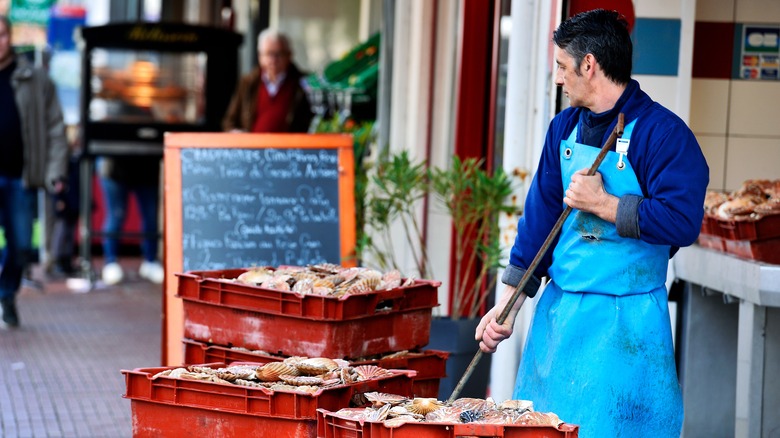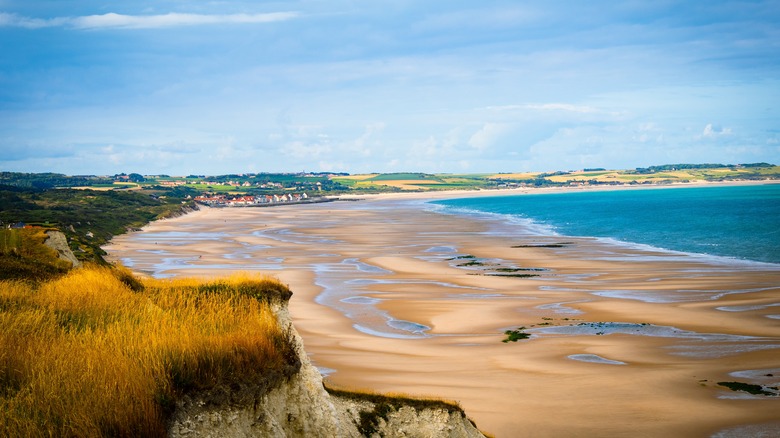A Foodie Destination In France Is A Coastal Region Brimming With Castles, Sand Dunes, And Seafood
If food is your passion, then Pas-de-Calais could be for you. This tasty corner of northern France lies just across the Straits of Dover. Once dismissed as a rural backwater, Pas-de-Calais has become a foodie favorite. Michelin-starred chef Alexandre Gauthier of La Grenouillère in Montreuil-sur-Mer helped put Pas-de-Calais on the food lover's map after he served Barack Obama, Vladimir Putin, and over 100 other world leaders in 2015. On the menu, among other dishes, was chicken from Licques, a town in Pas-de-Calais. "It's great that we can highlight a product from Pas-de-Calais," the chef told the Licques Poultry Farm at the time. "It's also my job to be an ambassador for this region where I live and where I grew up."
Since then, the culinary reputation of Pas-de-Calais has grown with more Michelin-starred restaurants drawing gourmands worldwide. For Parisians — and Londoners, thanks to Europe's border-busting Eurostar — it has become one of the most delicious getaways for, as the French would say, le weekend.
Michelin stars on the Opal Coast
The stretch of shoreline along Pas-de-Calais is known as the Opal Coast for its ever-shifting, iridescent light. Calais is the main port of the area. Getting there can mean a three-hour car ride from Paris or nearly as long of a train ride on the TGV high-speed train. If you're coming on the Eurostar, hop off at the nearby city of Lille, then rent a car or continue on the local railway. There are also daily ferries from Dover, England, to Calais.
If you plan well and book far in advance, you may be lucky enough to reserve a table at one of several Michelin-starred restaurants in the area. Le Pavillon in Le Touquet-Paris-Plage is a one-star restaurant under Chef William Elliot. The Michelin Guide wrote, "His surf 'n turf combinations and his balanced dishes hit the spot every time, illustrated by wild turbot, girolle mushrooms, blackberries, spring onions and smoked oil."
The two-star Château de Beaulieu in Busnes features another homegrown talent, Chef Christophe Dufossé, who focuses on locally sourced products. "Standout dishes include his red mullet à l'unilateral (cooked on one side) with a punchy jus of fish bones, cucumber tagliatelle, and an emulsion of fresh almonds," noted the Michelin Guide. "Or his stunningly unorthodox dessert which features green asparagus, an icy lemon balm foam, olive oil sponge biscuit, finely diced raw asparagus and kalamansi, and a sorbet of lemon and lemon balm." Both are on the more expensive end of the Michelin spectrum, so be prepared to splurge!
Secret bunkers, battlefields, and castles in Pas-de-Calais
It's not all fancy dining though. Despite the common food myth in France, local dishes extend beyond haute cuisine. The Pas-de-Calais region in particular is known for a mix of Flemish and French influences, with simmering pots of freshwater fish known as waterzoï or meats and vegetables called hochepot. No matter where you eat, brush up on these unspoken rules of how to dine like a local to appreciate the ambiance and mise-en-scene.
Besides food, Pas-de-Calais also offers windswept dunes along the Opal Coast and a rambling landscape of green gardens, tranquil canals, and stone cottages. It also has several interesting historic sites like La Coupole, the secret World War II bunker that Hitler built to launch V2 rockets for his failed attack on London. Several important World War I sites, including two in Arras, are also in this area. While there are not as many preserved castles as in other parts of France, Pas-de-Calais has the exceptionally well-preserved Château Comtal in Boulogne-sur-Mer, both a formidable fortress and a fairytale castle.
The best time to visit this part of France is during the summer, though note that August brings crowds and sweltering heat. Then, once you've had your fill of Pas-de-Calais, you can start planning another food trip, this time to France's food capital of Lyon.


